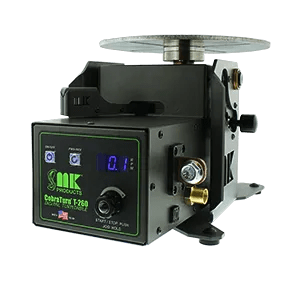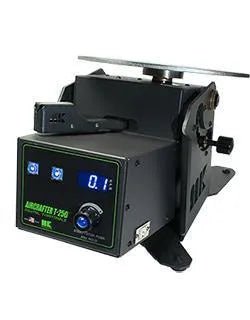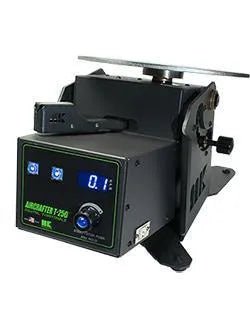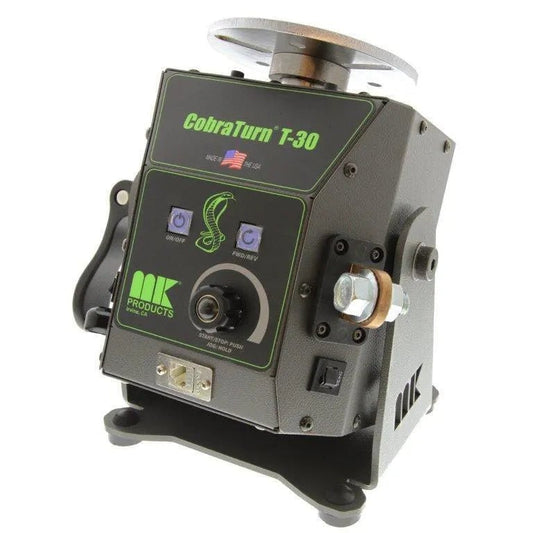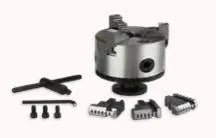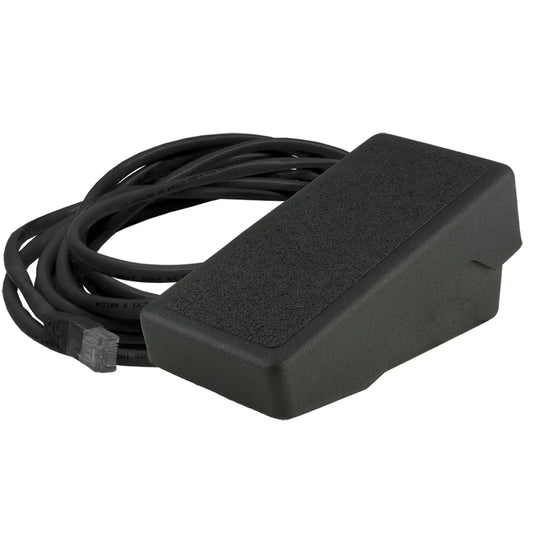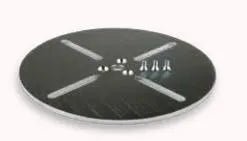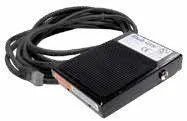What are Turn Tables?
Turntables in welding are motorized or manually controlled rotating platforms designed to hold and rotate workpieces during the welding process. These welding positioners ensure smooth, consistent rotation, allowing for precise, high-quality welds on cylindrical or complex parts such as pipes, tanks, pressure vessels, and aerospace components. By providing a steady and uniform rotation, turntables help maintain consistent arc length, penetration, and heat distribution, which is crucial for MIG, TIG, and orbital welding applications. They eliminate the need for manual repositioning, significantly reducing operator fatigue, weld defects, and production time.
Welding turntables are available in various sizes and load capacities, ranging from small benchtop models for precision welding to heavy-duty industrial units capable of supporting thousands of pounds. These machines feature adjustable rotation speeds, tilt functions, and remote control options, making them highly versatile for automated welding systems, robotic welding cells, and manual welding setups. Shops specializing in high-precision industries like aerospace, oil & gas, shipbuilding, and manufacturing benefit from turntables by improving weld repeatability, efficiency, and overall weld integrity, ensuring stronger, defect-free joints in critical applications.
Orbital Welding
Orbital welding is an automated welding process where the welding torch rotates 360 degrees around a fixed workpiece, typically pipes or tubes, to create consistent, high-quality welds with minimal human intervention. This method is widely used in industries requiring precision, uniformity, and cleanliness, such as aerospace, pharmaceuticals, food processing, and nuclear power. By using computer-controlled parameters, orbital welding ensures repeatable, defect-free joints while eliminating variations caused by manual welding. It is especially beneficial for stainless steel, aluminum, and titanium applications where maintaining weld purity is critical.
The process involves securing the pipe or tube in a specialized fixture, programming the welding system with precise settings, and allowing the orbital welding head to rotate around the workpiece. This results in consistent penetration, controlled heat input, and minimized distortion, making it ideal for high-purity and high-pressure systems. Orbital welding reduces operator fatigue, increases productivity, and ensures compliance with strict industry standards such as ASME, AWS, and ISO. By incorporating orbital welding into your shop, you can significantly enhance weld quality, reduce rework, and improve efficiency in high-volume production environments.
FAQ's MK Products
What does MK Products specialize in?
What industries benefit from MK Products' welding equipment?
How does a push-pull wire feed system improve welding?
What is the difference between a spool gun and a push-pull system?
MK Products’ welding systems and accessories are available through authorized distributors, welding supply stores, and online retailers like WeldingMart.com, ensuring convenient access to their high-performance welding solutions.
Featured Products
Why Your Shop Needs Turntables and Oribital Capabilities.
Understanding Turntables for Welding
A welding turntable is a motorized or manually operated rotating platform designed to hold and rotate workpieces, allowing for precise, consistent, and high-quality welds. These positioners are particularly beneficial for cylindrical parts such as pipes, tanks, and pressure vessels, where maintaining a steady weld bead is critical.
Benefits of Welding Turntables
- Consistent Weld Quality – Provides uniform rotation, ensuring a steady arc length and penetration.
- Increased Productivity – Reduces downtime by minimizing the need for repositioning the workpiece manually.
- Operator Comfort and Safety – Allows for welding in an optimal position, reducing fatigue and strain.
- Versatility – Supports various welding processes like TIG, MIG, and orbital welding for diverse applications.
Setup and Usage of Welding Turntables
- Secure the Workpiece – Clamp or fixture the material onto the turntable to ensure stability and alignment.
- Adjust Rotation Speed – Depending on the weld type and material, set the optimal rotational speed for even penetration.
- Position the Welding Torch – Align the torch angle and distance to ensure proper fusion and avoid undercuts.
- Engage Rotation and Begin Welding – Start the turntable and control the weld puddle for consistent, high-quality results.
- Monitor and Adjust as Needed – Fine-tune speed and amperage as necessary for optimal bead formation.
The Importance of Orbital Welding in a Modern Welding Shop
What is Orbital Welding?
Orbital welding is an automated welding process where the torch rotates 360° around a fixed pipe or tube, providing precise and repeatable welds with minimal operator involvement. This method is crucial for high-purity applications requiring leak-proof, defect-free welds in stainless steel, aluminum, titanium, and other alloys.
Why Your Shop Needs Orbital Welding Capabilities
- Perfect for Pipe & Tube Welding – Ensures uniform penetration in pharmaceutical, food processing, aerospace, and nuclear industries.
- Automated Precision – Reduces human error with computer-controlled settings that maintain weld integrity.
- Consistent Weld Quality – Eliminates inconsistencies caused by manual welding, ensuring defect-free joints.
- Efficient & Time-Saving – Speeds up production while maintaining high-quality results, reducing the need for rework.
- Compliance with Industry Standards – Meets strict industry requirements such as ASME, AWS, and ISO standards.
Setup and Usage of Orbital Welding Systems
- Prepare the Workpiece – Ensure the pipes or tubes are clean, aligned, and properly beveled.
- Secure in an Orbital Welding Fixture – Lock the workpiece in place to eliminate movement during welding.
- Program Welding Parameters – Set weld speed, amperage, and oscillation using the orbital welding controller.
- Align the Orbital Torch – Position the torch head at the proper angle and distance for optimal fusion.
- Start the Automated Welding Process – The system will rotate the torch while controlling all welding variables.
- Inspect & Post-Weld Cleaning – Conduct visual and NDT inspections to verify weld integrity and remove any oxidation if required.
Integrating Turntables & Orbital Welding in Your Shop
By incorporating turntables and orbital welding systems, your shop can:
✔ Enhance efficiency with automation and precision.
✔ Expand capabilities to take on more specialized, high-value projects.
✔ Reduce rework and material waste with high-quality, consistent welds.
✔ Improve worker safety by eliminating manual errors and fatigue.
If your shop works with high-purity piping, pressure vessels, or aerospace components, investing in these technologies can significantly increase your competitive edge while ensuring industry compliance and superior weld quality.











